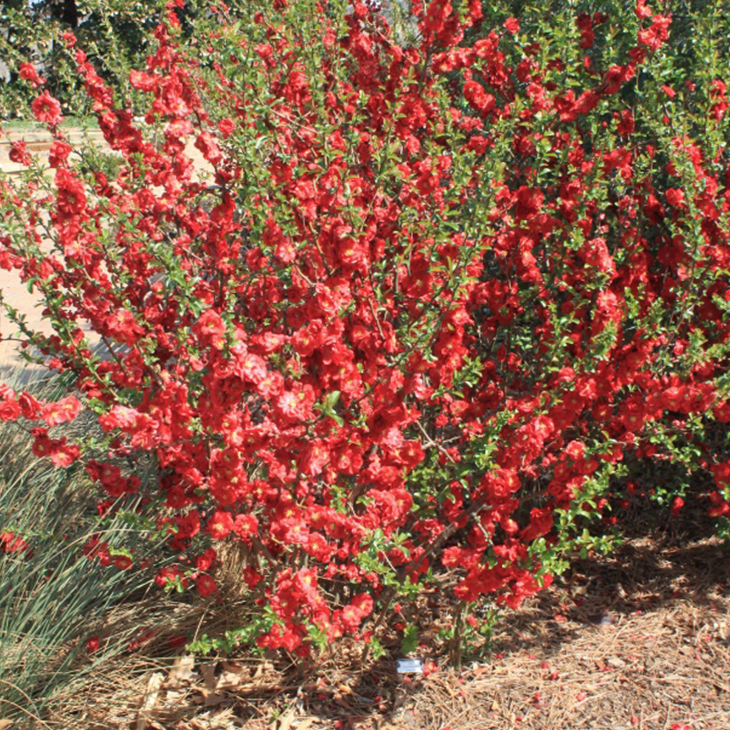
Oklahoma Proven celebrates 20 years helping gardeners with great plant selections
Wednesday, March 6, 2019
When it comes to gardening, it always is good to have an ace up your sleeve. Fortunately, Oklahoma gardeners have had that ace for two decades.
With the help of the Oklahoma Proven plant evaluation and marketing program, gardeners around the state have gotten the inside information regarding plants, shrubs and trees that grow well in Oklahoma’s diverse climate.
David Hillock, Oklahoma State University Cooperative Extension consumer horticulturist, said it is no secret the extremes in Oklahoma’s weather and diverse growing conditions can make gardening a challenge.
“Not only can the summer’s extreme heat be problematic, but combined with little rainfall and various types of soil, some gardeners may want to throw in the proverbial trowel,” Hillock said. “This is where Oklahoma Proven lends a hand to gardeners as they select plants that will do well in the growing conditions in their area.”
Oklahoma Proven began in 1999 and this year celebrates 20 years of research-based information for plant selections chosen by horticulturists that are appropriate for Oklahoma gardens. The 2019 selections include: tree – Vanderwolf’s Pyramid, a cultivar of limber pine; shrub – Double Take ™ series flowering quince; perennial – rattlesnake master; and annual – Graffiti® series star flower.
Limber Pine is an evergreen tree with a pyramidal habit that typically grows about 20 to 30 feet tall and 10 to 15 feet wide. Its name is in reference to the flexible branches/twigs. This tree is noted for its closely spaced, twisted, silvery blue green needles. It needs full sun exposure and moist, well-drained soil and grows best in USDA Zones 4-7.
If your garden plans include shrubs, seriously consider the flowering quince in the Double Take™ series. This hardy, deciduous shrub grows to about 5 feet tall and is at least 5 feet wide. It produces a profusion of early spring double flowers that resemble camellias. This shrub is dense and thornless and the blooms come in scarlet, orange, pink and peach. Plant in sun to part shade in well-drained soil, although it does tolerate a variety of soils. Its hardiness is USDA Zones 5-9.
The name rattlesnake master may not be popular with some gardeners, but this perennial is a native species to the tall grass prairies. Leaves of this plant are parallel-veined, bristly edged, sword-shaped and medium green. The flowers are greenish-white and tightly packed into globular, 1-inch diameter heads resembling thistles. The flowering heads attract many kinds of insects. Rattlesnake master is versatile in that it prefers dryish, sandy soils, but tolerates clay and rocky soils. This is a taprooted plant making it very drought tolerant and is best left undisturbed once established. Group plants in a naturalized area for the best effect. Exposure should be sun and part shade and does well in USDA Zones 5-9.
This year’s annual is more commonly known as the Egyptian starflower and native to northeastern Africa. The starflower thrives in very hot and dry conditions, so it does well in Oklahoma in USDA Zones 4-7. It grows up to 16 inches tall and 12 to 14 inches wide, which makes it a great plant for both containers and traditional flower beds. Available in several colors, including red, rose, pink, white, violet and lavender, this selection is both heat- and drought-resistant. For those who like cut flowers in the home, this is a great choice. Heat, sun and good drainage encourage the plant to bloom heartily all summer long.
“There’s not much that comes with a 100 percent guarantee of success, but the research that has gone into all of the Oklahoma Proven selections over the last two decades certainly gives gardeners the opportunity for a positive outcome,” Hillock said.
Full color photos of this year’s Oklahoma Proven selections, as well as selections from previous years, are available at http://www.oklahomaproven.org/.
